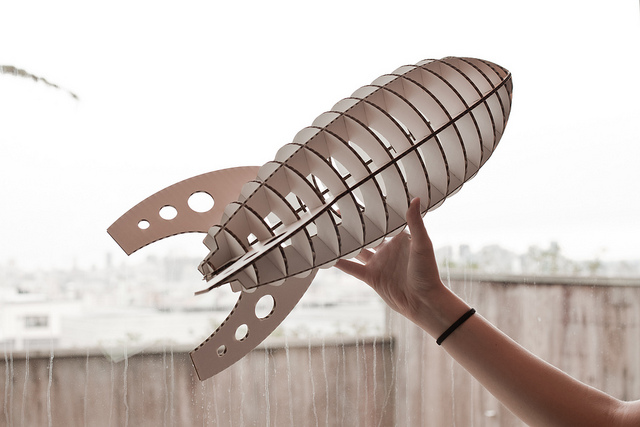The role of 3D printing in the education sector is something that cannot be overlooked. 3D printing not only increases the inquisitiveness of the students but also helps the students in making their projects filled with life. One such example is that of Matthew Dusard and his team of fellow students who decided to fix some of the problems that they had encountered while doing a project at the University of Arizona.
The subject of the project was high powered rocketry. These students took to 3D printing when they were having difficulties in creating the parts of the rockets with some modifications. So, these students worked with a 3D printing company named Solid Concepts and printed these parts. By this move they not only could successfully make the modified part but also win the award for Best Overall Design at the Design Showcase of the University of Arizona.
3D printing wasn’t something new for Matthew Dusard; he had used this technology while doing an internship. Dusard says, “A part I had designed required form and fit assembly testing; we 3D printed a replica using Stereolithography (SLA). My fascination with 3D printing began there while watching the SLA part grow in the machine, and stayed with me throughout college. For my senior design project this year, I knew 3D printing would be crucial for construction of my team’s high powered rocket. Our previous experience with high power rocketry had revealed multiple problem areas, and we were confident 3D printing offered the advantages to solve those problems. Using Fused Deposition Modeling (FDM) coupled with a higher performance aerospace quality material, we built booster fins, the aft body structure and tail cone for our high power rocket.”
3DP not only saved the time that otherwise would have been consumed if a traditional method was employed to build the modified part but also the part which was produced by 3D printing was 85% more efficient than the typical rounded flat plate design. The added benefit was because with 3D printing accurate and precise curvatures and spacing could be created with not much hassle. Another point where 3D printing helped the venture was an improvement in the on board computer’s accessibility. The problem was that each time there was a problem in the rocket the rocket had to be disassembled. This consumed a lot of time and energy which was also delaying the project. So to combat this problem Dusard 3D printed circuit mounts. These mounts allowed the electronics to be pulled in and out of the side of the rocket and so they didn’t have to dismantle the rocket each time. This also made repair works easier than earlier.
3D printing played a crucial role in Dusard’s project and this is also a commemoration to the benefits that students can get from 3D printing. This is the most amazing amalgamation of creativity with knowledge of 3D printing. Dusard says, “From the time gained by 3D printing complex assemblies as single pieces, to the ease of use created by novel electronic mounting methods, our innovative ideas came to reality because of 3D printing”.
Image Credit: Matt Biddulph (flickr handle: MBiddulph)
